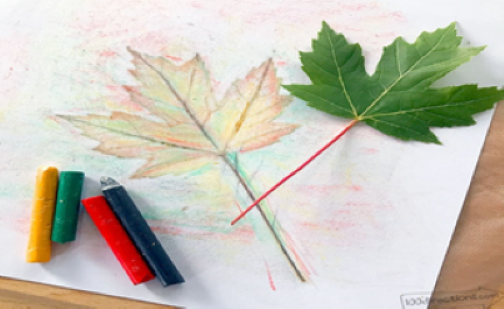|
Since 2017, local teachers have been working with Acadia National Park to bring students outside to their school yards and beyond. To make it easier to get kids out, teachers have written short activities and crafts. Each activity is significantly shorter than a full lesson or lesson plan and are designed to supplement or jumpstart other lessons. These can also be wonderful extensions for Acadia National Park field trips or distance learning. Each of the activities were created for educators, by educators. Any books, materials, or links suggested in these lessons are not endorsed by the National Park Service. 
Outdoor EthicsGrades Pre K- 1: Leave No Trace RoutinesLeave No Trace is a framework to allow students to explore the outdoors safely and respectfully. It includes 7 principles that make it easy for kids to spend time outside in a mutually sustainable way. The following activities help students explore these concepts and become experts in Leave No Trace.Grades K-8: Acadia Outdoor Scavenger HuntsScavenger hunts are fun, hands on ways to explore Acadia and learn about different parts of the park. These scavenger hunts are designed in a way that can be shared with Acadia National Park Rangers, and students can print their own certificates of completion when they finish.Grades 4-7: Compass AdventuresStudents will be able to navigate through at least 5 landmarks in the outdoor campus using the directional signals of a compass rose. The affective goal of this activity is to have the students get outside and navigate through their natural world. I want them to see the importance of using a compass instead of just understanding how to read NSEW on google maps.Grades 5-8: Easting and Northings- Mapping InvestigationsThis lesson builds up slowly to read Map Grid References for later learning and practice orienteering. Orienteering is a navigation and sport activity that incorporates walking or jogging, determining directions, and map reading. The object of the activity is to use a map and compass to locate specific points in each area.HistoryGrades 2-4: "Historic" Journal ActivityStudents will be able to make and write a journal inspired by journals from the past. Before making journals talk about the importance of journals to preserving history. Much of what we know about life in the 1800’s comes from stories and from these primary documents.MathGrades 4-7: Perimeter and Area OutdoorsUsing this activity students will be able to understand the difference between area and perimeter. Students will identify shapes on campus and find the area and perimeter. Grades 5-9: Proportional Triangles OutdoorsStudents will be able to understand similar triangles and proportions. Students will do this through measuring a tree shadow and using their own height and shadow length to set up a proportion. By finishing the calculation, the students will find the height of the tree or building. Activity designed for grades 5-9 but can be modified higher or lower.LiteracyGrades K-6: Flat RangerInspired by books like Dale Hubert's beloved "Flat Stanley", students can write a letter to an Acadia National Park Ranger and receive a personalized response.Grades 3-5: Poetry in NatureStudents will be able to explore and observe their outdoor space using all their senses in order to create an original work of poetry.ScienceEarth ScienceGrades 2-5: Concentric Sedimentary CirclesStudents will learn about sedimentary rock and the various sizes including boulder, cobble, pebble, sand, silt, and clay. They will create a temporary piece of art, based on concentric circles, using their various sizes of sedimentary rock found in nature using a geo sieve.Grades 6-12: Acadia Rocks Story MapGeorge Dorr, the first superintendent of Acadia National Park, spoke of the geology of Mount Desert Island as a "striking and instructive geologic record". Indeed when we observe the geology of Downeast Maine we see a story of fire and ice. Incredible volcanism visible in the granite summits and rounded mountains and deep lakes and ponds that could only be created by multiple glaciations offer unique evidence of Acadia's geologic story.To learn more, explore Acadia Rocks story map. Life ScienceGrades Pre K-1: Phenology RoutinesThe study of seasonal and cyclical changes in the natural world is called phenology. This study is important in understanding the needs of plants and animals and the ways in which they adapt to seasonal changes. Documenting the seasonal changes in the natural environment provides students with an opportunity to practice paying close attention to their surroundings.
Students can find three different leaves, use them to do a leaf rubbing and then use vocabulary words to describe those leaves.
|
Last updated: December 30, 2022
